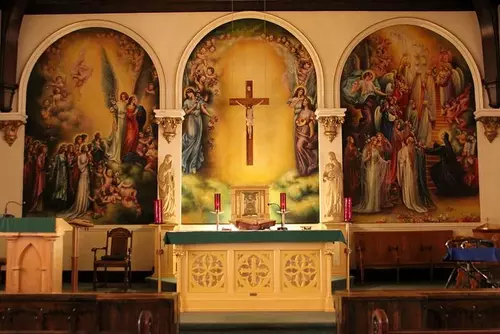
Summer travels brought unexpected surprises for the Ecclesiastical Sewing family in Montana. A visit to the Ursuline Center revealed a hidden treasure—a Sister’s art studio in the tower, showcasing two hand-painted Ecclesiastical Banners. One banner displayed signs of age with faded beauty, intricate details, and gold bullion fringe. The banners’ origin and age are unknown, making them even more intriguing.
Like this:
Like Loading...
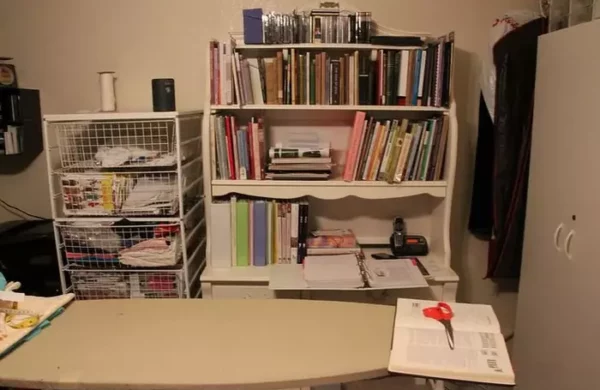
Organizing Ecclesiastical Sewing and Embroidery books has improved project efficiency. A dedicated bookshelf ensures quick access to references, enhancing workspace tidiness and productivity.
Like this:
Like Loading...
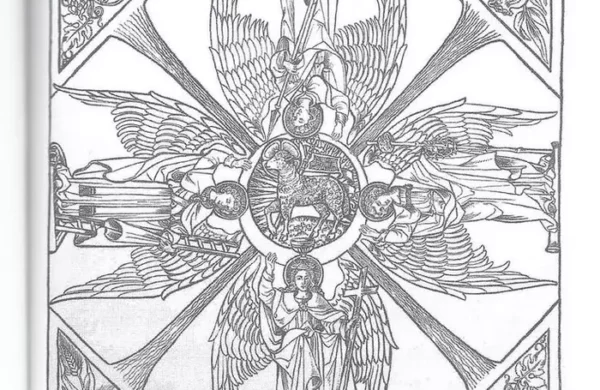
Weekend thoughts on Church Sewing: Looking at a Chalice Veil design from “Design for Church Embroidery” by R.A. Alethea Wiel. It has an Agnus Dei and four angels, each symbolizing something. The balanced design, shapes, and careful placement make it beautiful. Thinking about its artistry makes us wonder about true beauty in modern designs and what we can learn. Also, seeing the design in Or Nue embroidery on different platforms adds a touch of history.
Like this:
Like Loading...
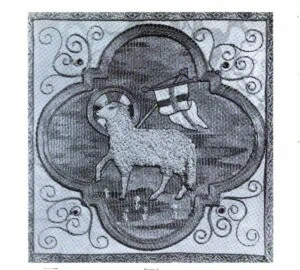
Tried a new embroidery stitch, feeling a bit scared. Sometimes, fear stops from starting. But taking a step, stitching, and learning are important. Each stitch is like a step toward getting better. It’s okay not to be perfect. The important thing is to keep trying, growing, and enjoying the journey.
Like this:
Like Loading...

Preparing to transfer Ecclesiastical Embroidery patterns on white fabric. Testing blue quilt pounce for clear, washable lines. Pouncing carefully to avoid powder loss. Tracing with General’s pastel chalk, Paper Mate Flair, and Stabilo pens for comparison. Learning as we go for optimal results. Stay tuned for the next steps!
Like this:
Like Loading...

Testing transfer methods for whitework embroidery. Experimenting with blue quilt pounce powder on linens. Trying a gray pastel pencil for clean lines. Seeking a washable solution to prevent discoloration. Updates coming soon!
Like this:
Like Loading...
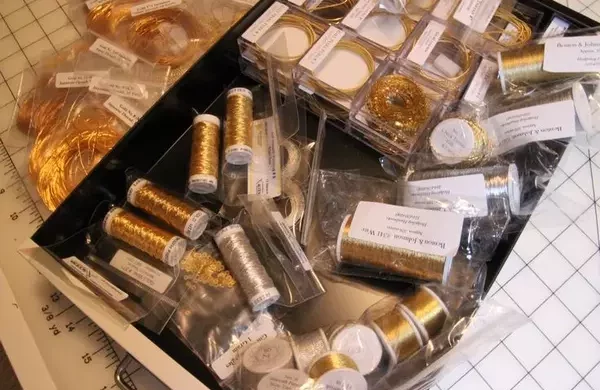
Choosing gold threads for the Easter Set Pulpit Fall project. Considering Imitation Japan Thread and Tyre silk threads for couching. Excited to see the glitters in the finished goldwork!
Like this:
Like Loading...

Stitching progress on the Easter Set Pulpit Fall project, focusing on the quarter circle with silk embroidery. Using Au Ver A Soie – Soie Ovale in Crème, the flat silk creates a textured and elegant background. Goldwork couching up next!
Like this:
Like Loading...

The inspiration for current Ecclesiastical Embroidery projects comes from Lucy Mackrille’s book, featuring the Victorious Angus Dei with a quatrefoil frame. The Italian Stitch, damascene stitch, and goldwork embroidery threads are used, drawing from a wealth of knowledge provided by Mackrille’s book and online mentors. The fear of trying new techniques diminishes with thorough reading and guidance.
Like this:
Like Loading...
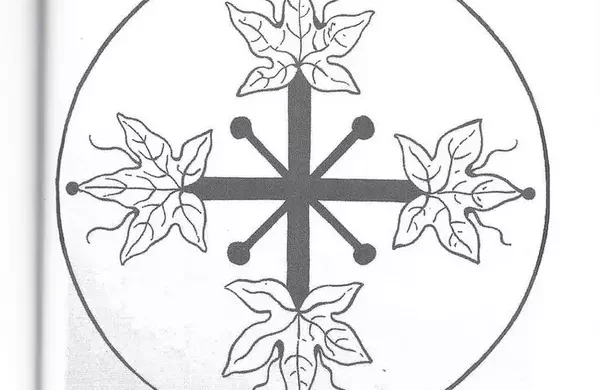
Receiving new Ecclesiastical Embroidery books among them is “Design for Church Embroidery” by R.A., Althea Wiel, originally published in 1894. This treasured book, now republished, offers a glimpse into historical Ecclesiastical vestment designs. One notable design, intended for a chalice veil, intricately symbolic of Christ, His Sacred Heart, and symbolic elements like grapes and vines. Another design features a simple yet elegant cross adorned with ivy leaves, suggesting color choices for stitching. These designs provide a valuable connection to the artistry of the past in Ecclesiastical Embroidery.
Like this:
Like Loading...
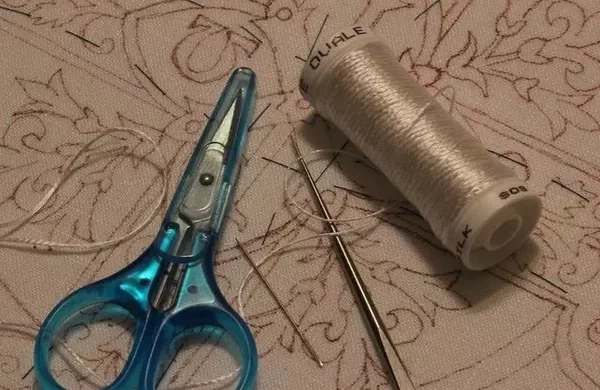
The choice of thread for the initial work is Soie Ovale in Creme, a large-size spool from Thistle Threads. This thread is employed as a laid thread to fill the background around the lilies in the four corners of the circles. The laid work with flat silk requires a steady rhythm. The areas between the lilies, expected to be tedious, turn out to be enjoyable and are progressing well. Despite occasional challenges, the stitching is underway, bringing the project to life.
Like this:
Like Loading...
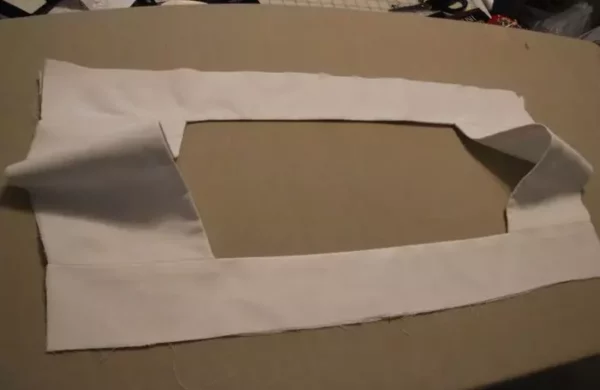
Working on creating clear and simple step-by-step directions for sewing a square-yoke surplice, a traditional church vestment. Utilizing old vestment books, a two-piece yoke pattern is drafted for easy construction.
Like this:
Like Loading...

Creating a special garment for Holy Baptism—a simple, symbolic white piece to signify putting on the Holiness of Christ. This keepsake, though used briefly, holds significance as part of the Order of Holy Baptism. An easy project with a tiny neckline, a cross or shell design, and simple edges, making it a meaningful and quick creation for a memorable occasion. Perfect for families who wish to cherish the remembrance of their infant’s baptism.
Like this:
Like Loading...
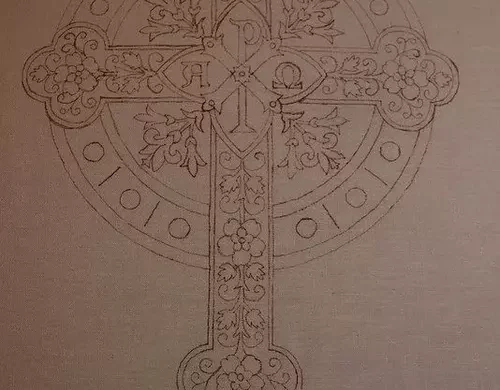
Framing the Ecclesiastical Embroidery design for the Pulpit fall in progress. A cross with floral motifs, Chi-Rho, and lilies will adorn this piece., considering the fabric’s brocade backdrop. The original floral details may evolve into goldwork threads for a stunning effect. The framed design offers a space to experiment with colors and ideas. Excitement builds for this Easter Ecclesiastical Vestment set, with plans to baste layers and provide a protective cover soon.
Like this:
Like Loading...
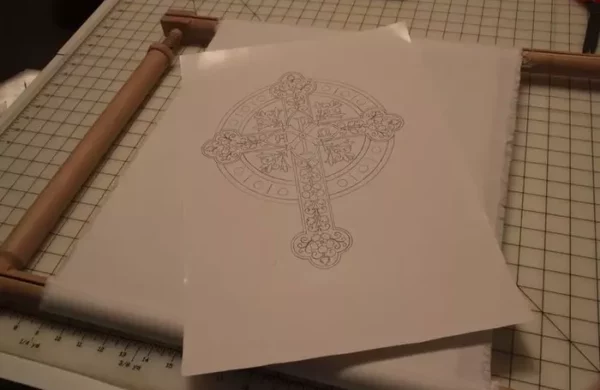
Ecclesiastical Embroidery Design project for the Easter Pulpit Fall is underway. The linen is now framed up, and the pouncing and tracing will soon be complete. Utilizing the Millennium Frames from Needle Needs for the first time, a short video tutorial was a helpful guide. Framing proved a bit tricky with two layers—the Alabaster Linen from Hedgehog Handworks and a layer of Kona Cotton for backing and support. flipping the frame to the backside ensured proper alignment and support for the lining fabric.
Like this:
Like Loading...
















You must be logged in to post a comment.